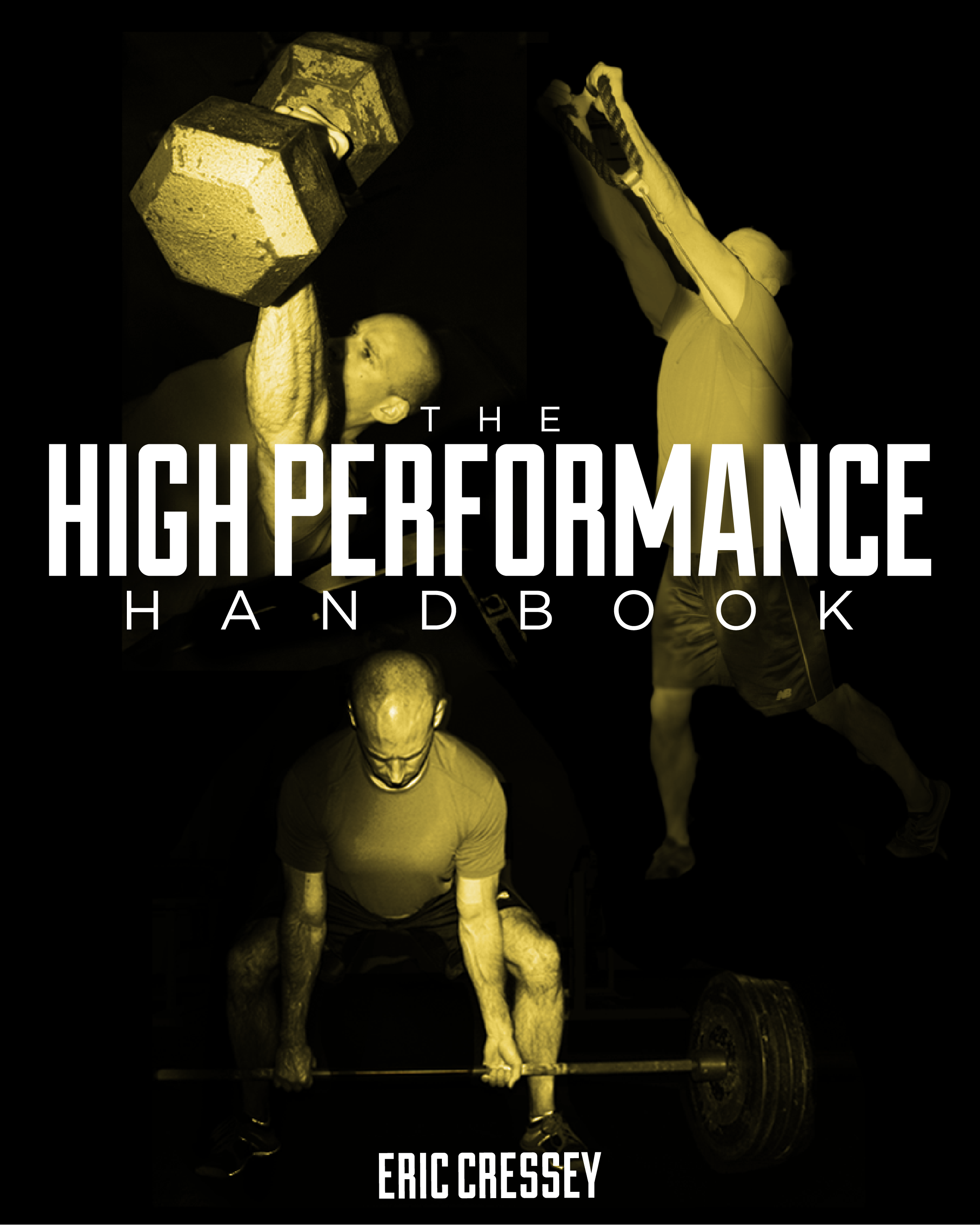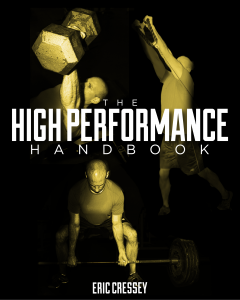
5 Ways to Do Less and Get More from Your Strength Training Programs
Whenever someone talks about a plateau they’ve hit with their strength training programs, the first question they usually ask is “What should I do?” In reality, the answer isn’t just what one should do, but what one shouldn’t do, as well. Here are five examples of how you can get more out of your strength training programs by doing less.
1. Leave the gym sooner.
Tony Gentilcore is one of my best friends. We co-founded Cressey Sports Performance, were roommates for two years, and he were groomsmen in one another’s weddings.
We also have been training partners since 2005. And, in just about every training session we’ve ever shared, I’ve finished before Tony. Tony absolutely loves to train, so he’s always adding stuff at the end: things like conditioning, accessory work, curls and lateral raises. This stuff is all well and good in the battle to improve his physique, but it’s always attenuated his strength gains.
As a frame of reference, back in 2005, my best raw bench press and deadlift were 250 and 510, respectively. They’re now up to 365 and 640. In that same time period, Tony has gone from roughly 250 to 300 on the bench press, and 500 to 580 on the deadlift.
That said, make no mistake about it: Tony is still a pretty strong dude – and he walks around at sub-10% body fat year round and could be a Men’s Health cover model body with a week of dieting. He trades off some of his strength gains for the volume it takes to build the physique he wants. I, on the other hand, trade off some of the physique stuff to enhance my strength.
We take these considerations into mind whenever we write programs for clients. It’s all about individual preference, and your goals may shift over time. If you’re looking to get stronger faster, though, look to eliminate some fluff and focus on putting your eggs in the “quality, not quantity” basket.
2. Quit pairing so many things up.
We use a lot of “fillers” in the strength and programs we write for athletes. For instance, they may do a set of yoga plex to work on hip and thoracic spine mobility between sets of trap bar deadlifts. Athletes have so many competing demands that you can’t just ignore everything else while you work to build strength, or else you’ll run out of training time.
In some of our general fitness clients who have a lot of mobility restrictions to work through, but also need to drop body fat and build work capacity, we may use trisets, pairing up 1-2 strength/stability exercises with a mobility drill. They get a little bit of everything, and they keep moving.
You know what, though? None of the elite caliber powerlifters and Olympic lifters I’ve met do this. They lift, and then stand (or sit) around between sets. They might not move as well in a variety of contexts as some other athletes I encounter, but they’re damn strong.
Look at your program and weight the benefits of adding filler work between sets. For most folks, the benefits definitely outweigh any subtle reduction in strength you’d see on the main strength exercise. If, however, your goal is to squat 800 pounds, you don’t need to be doing a set of chops or lifts between sets; you’re better off resting and contemplating the challenge ahead, then hitting your assistance work thereafter.
3. Shorten up your movement training and conditioning.
A lot of people want to get stronger, but don’t want it to interfere with their ability to train for sprinting, agility, or conditioning. The quick and easy response to these folks is to simply pare back on how much you do with these somewhat competing demands.
If you’re accustomed to running 200-400m sprints for conditioning, shorten it to 50-100m and take a bit longer for recovery between sets.
If you normally sprint three times a week, cut back to 1-2 sessions just to maintain what you’ve built as you add strength to the equation.
If you’re used to doing 10-12 sets of agility work in a training session, cut it in half and put it during your warm-up before a strength training session.
Personally, a big chunk of my conditioning actually takes place on the rowing machine in my basement. I’ll just hit 3-5 rounds of 200-500m (anywhere from 30s to 120s) at a once or twice a week frequency.
4. Go to a lower rep range with your main strength exercise of the day.
This sounds like a no brainer, but you’d be amazed at how many intermediate to advanced lifters plug away with 4×6 and 5×5 rep schemes, but can’t possibly understand why their strength levels aren’t improving. So, here’s a good general guideline:
Lifting really heavy weights (>90% of 1RM) for few reps can get you stronger. Lifting lighter weights (40-70% of 1RM) for few reps with great bar speed can also get you stronger. Being in the middle (70-90%) and doing more reps at a slower bar speed often winds up being like riding two horses with one saddle.
There are two take-home points here. First, regardless of the weight on the bar, your intent should always be to be as fast concentrically (lifting) as possible. Second, doing sets of five or more reps isn’t going to have a great neural benefit for strength improvements, although the volume may help you to gain body weight as a means to build strength. Save the higher rep stuff for your assistance work.
5. Deload.
A line I heard from Kelly Baggett back in the early 2000s has always stuck out in my mind:
Fatigue masks fitness.
If it didn’t, we’d all be able to match (or exceed) our personal records in every single training session. That may be the case when you’re a complete beginner, but it’s certainly not once you get some experience under your belt. If you find you aren’t getting stronger, try taking some time off and increasing the amount of recovery-oriented strategies – naps, massage, compression – you employ. You might just find that you bounce back with a PR in a matter of days.
These are just five examples of how subtle modifications to your strength training program can yield big results. They do, however, underscore the importance of having a versatile strength and conditioning program that can be modified to suit almost any goal. To that end, I’d encourage you to check out The High Performance Handbook.




